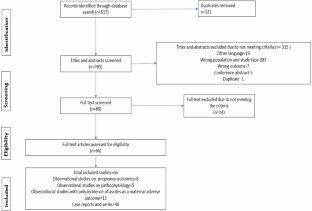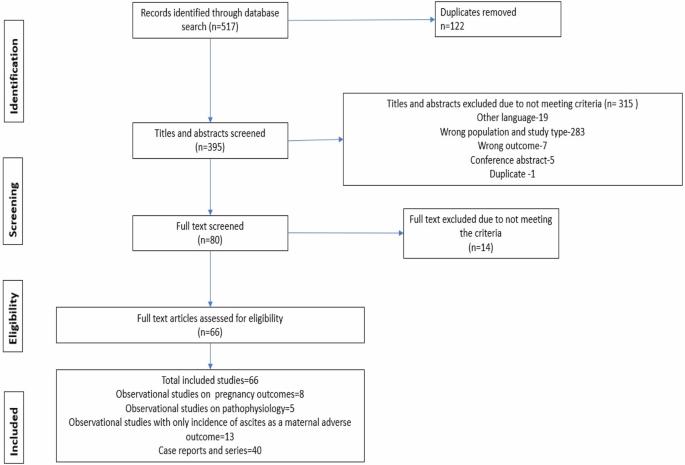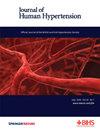Pathophysiology and pregnancy outcomes of ascites in preeclampsia—a scoping review
IF 2.7
4区 医学
Q2 PERIPHERAL VASCULAR DISEASE
引用次数: 0
Abstract
Preeclampsia is a multisystem disorder associated with defective trophoblast invasion, maternal syndrome, and capillary endothelial leak. The presence of ascites/third space fluid accumulation increases the risk of maternal morbidity and mortality. The current criteria/guidelines of preeclampsia do not establish the presence of ascites as a marker of severity or recognize the timing and need for early delivery despite associated complications. Medline and Embase databases were searched to identify relevant literature, reported up to December 2023, regarding the pathophysiology, pregnancy outcome, and management of preeclampsia complicated with ascites. A total of 5 studies on pathophysiology and eight on pregnancy outcomes met the inclusion criteria, with 41 case reports on ascites in preeclampsia. The etiopathogenesis for the development of ascites in preeclampsia includes endothelial damage, capillary hyperpermeability, release of vasoconstrictive agents, reduced intravascular oncotic pressure, and raised intraabdominal pressure. The presence of ascites represents the extreme form of microvascular damage, which also correlates with the raised sFlt-1 levels in this condition. The adverse pregnancy outcomes include increased risk of congestive heart failure, eclampsia, renal failure, disseminated intravascular coagulation, acute respiratory distress syndrome, and maternal death. The presence of ascites in preeclampsia is associated with the deterioration of the maternal condition. Hence, it is indicative of preeclampsia with severe features and requires vigilant monitoring, and prompt delivery may be considered.


子痫前期腹水的病理生理学和妊娠结局--范围综述。
子痫前期是一种多系统疾病,与滋养细胞侵袭缺陷、母体综合征和毛细血管内皮渗漏有关。腹水/三腔积液的出现会增加孕产妇发病和死亡的风险。现行的子痫前期标准/指南并未将腹水的存在作为严重程度的标志,也未认识到尽管存在相关并发症,但仍需尽早分娩的时机和必要性。我们检索了 Medline 和 Embase 数据库,以确定截至 2023 年 12 月有关子痫前期并发腹水的病理生理学、妊娠结局和管理的相关文献。符合纳入标准的病理生理学研究共有 5 项,妊娠结局研究共有 8 项,子痫前期腹水病例报告共有 41 项。子痫前期腹水的发病机制包括内皮损伤、毛细血管高渗透性、血管收缩剂的释放、血管内渗透压降低和腹内压升高。腹水的出现代表了微血管损伤的极端形式,也与这种情况下 sFlt-1 水平的升高有关。不良妊娠结局包括充血性心力衰竭、子痫、肾功能衰竭、弥散性血管内凝血、急性呼吸窘迫综合征和孕产妇死亡的风险增加。子痫前期出现腹水与产妇病情恶化有关。因此,腹水表明子痫前期症状严重,需要警惕监测,并考虑及时分娩。
本文章由计算机程序翻译,如有差异,请以英文原文为准。
求助全文
约1分钟内获得全文
求助全文
来源期刊

Journal of Human Hypertension
医学-外周血管病
CiteScore
5.20
自引率
3.70%
发文量
126
审稿时长
6-12 weeks
期刊介绍:
Journal of Human Hypertension is published monthly and is of interest to health care professionals who deal with hypertension (specialists, internists, primary care physicians) and public health workers. We believe that our patients benefit from robust scientific data that are based on well conducted clinical trials. We also believe that basic sciences are the foundations on which we build our knowledge of clinical conditions and their management. Towards this end, although we are primarily a clinical based journal, we also welcome suitable basic sciences studies that promote our understanding of human hypertension.
The journal aims to perform the dual role of increasing knowledge in the field of high blood pressure as well as improving the standard of care of patients. The editors will consider for publication all suitable papers dealing directly or indirectly with clinical aspects of hypertension, including but not limited to epidemiology, pathophysiology, therapeutics and basic sciences involving human subjects or tissues. We also consider papers from all specialties such as ophthalmology, cardiology, nephrology, obstetrics and stroke medicine that deal with the various aspects of hypertension and its complications.
 求助内容:
求助内容: 应助结果提醒方式:
应助结果提醒方式:


